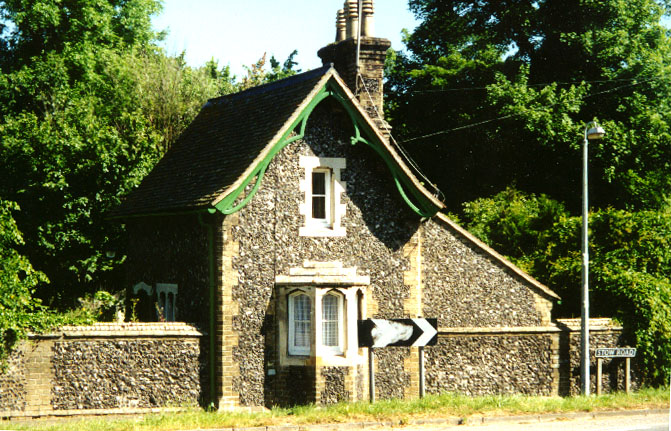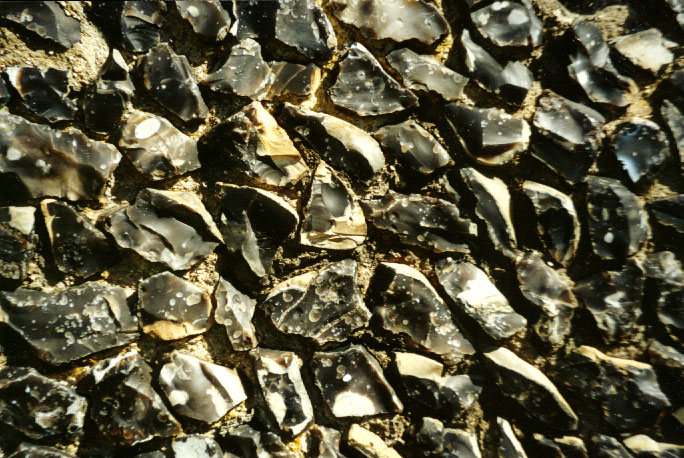
As the Chalk weathers, the erosion-resistant "flints" (nodules of chert) like those shown below remain at the earth surface as a residue. They thus provide a readily available, if difficult to manage, building stone. Note that in the example above from Stow-cum-Quy (east of Cambridge), as well as in another example from Great Sampford, the chert nodules are never used to form corners but only fill walls between corners made of other stone.
Note in the image below that all of the exposed surfaces of the chert nodules are freshly broken. For comparison, many of the nodules at Great Sampford are unbroken, so that weathered surfaces are exposed. Stone masons commonly go to the trouble to arrange freshly broken faces outward, providing the smooth sharp-edged surfaces abundant in the image below.
